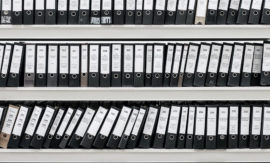Intended learning outcomes: Describe how to transfer given data into the fundamental logistical object classes for the master data.
Take products A and B, as they were defined in the exercise in Section 16.7.2 (in other words, with the individual tools). Transfer the given data into the fundamental logistical object classes for the master data, as was shown in Figure 17.2.8.1 or 16.2.1.3, namely:
- Item
- Bill-of-material position
- Work center
- Operation
To enter all the data, you will need two additional classes that were mentioned in Figure 17.2.8.2, namely:
- Production equipment (tool, device, machine)
- Bill of production equipment position
Determine all the necessary attributes and their values for the individual objects (entities) in these six classes.
Hints: The number of objects per class is as follows:
· Item: 3
· Work center: 2
· Production equipment: 6 (2 machines and 4 tools / devices)
· Bill-of-material position: 2
· Operation: 4
· Bill of production equipment position: 8 (2 products, each with 4 equipments)
Course section 17.8: Subsections and their intended learning outcomes

17.8 Scenarios and Exercises
Intended learning outcomes: Elaborate different forms of representing bills of material and where-used lists. Identify basic master data objects.

17.8.1 Exercise: Different Forms of Representing Bills of Material
Intended learning outcomes: Identify various types of bills of material, given a graphical representation of the bill of material of two products.

17.8.2 Exercise: Different Forms of Representing Where-Used Lists
Intended learning outcomes: Identify various types of where-used lists, given a graphical representation of the bill of material of two products.

17.8.3 Exercise: Basic Master Data Objects
Intended learning outcomes: Describe how to transfer given data into the fundamental logistical object classes for the master data.
